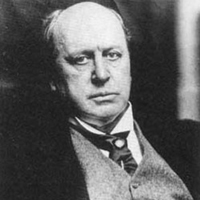The Ambassadors by Henry James: Introduction
The Ambassadors by Henry James was first published in serial form in 1903 in a journal The North American Review. Later with some major changes the novel was published in the same year as a whole. The whole novel is divided into twelve sections and these sections are called books. Henry James had edited the novel many times, sometimes with some significant change and sometime with some trivial change.

Henry James (1843-1916)
When the novel was published in1903 with great alteration, it was published both in the US and in UK, but still there were variations in those works too.
In an autobiographical sense, James's protagonist of the novel, The Ambassadors, Strether symbolizes the mature and aged James himself. The evolution of self, the nostalgic past and the remorse faced by Strether resemble Henry James’s own experience. James mostly deal with various subject matters of life, society and politics. His major interests were in gender roles, sexual expression and suppression, marriage less life of the main characters, sexuality full of questions, language, race, expatriation, and culture. In The Ambassadors the story of the plot moves in such a way that the suspense are revealed not in the details of what happens next but how will it happen in the next episode. This way of unfolding the realities makes the reader so curious that they are compelled to think what might have happened if the situations were different.
Henry James put great emphasis on the construction and form of his novels and The Ambassadors is one of his best in point of view of construction. There are no loose ends; the entire story is neatly gathered together. The importance of this novel is that, in it he has last conquered his embarrassment over people from America. His earlier novels had displayed these people of his native land as rather barbaric in their appreciation of Europe. But in Lambert Strether and Chad Newsome, James portrayed two Americans who had the intelligence to realize in Paris what they had missed in the black and narrowed existence of their earlier lives in New England.
Henry James's craftsmanship lies in his narrative technique in the novel The Ambassadors. He does not narrate the whole novel from single narrative technique. Complex form, diplomatic sentences, restricted point of view, dramatic dimension, use of dialogue and description in complex form, division of the book, juxtaposition, etc. are some of the important features of James's narrative technique in the novel.
Henry James includes so many scenic episodes in his novel The Ambassador. The chronological development of the holistic plot structure includes so many scenic episodes in the novel. Out of the twelve sections of the books almost every section includes scenic episodes. In another word the whole novel lies in an episodic manner. But one of the interesting aspects of the novel is how the episodes take place rather than what happens in any events. The novel from beginning to the end includes a different number of episodes.
Most of the scenes of The Ambassadors are set in Paris that is why it is more difficult to situate the story within an American political context. Besides, among all of James's late works, The Ambassadors is perhaps the most decoratively created. This is a novel where there is good domination of the form over the context, without damaging the intended themes of the novel. Philip Fisher, a professor of English at Harvard, describes the novel as "one of the master texts of a whole generation of American study and perhaps from an academic point of view, the most perfect book ever written by an American."
